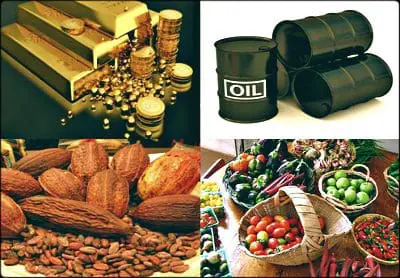Crude Oil prices fall to record low by 1.32% on a month-on-month basis in April, after experiencing a bullish run in previous months, OPEC indicates.
Spot crude prices averaged lower in April for the first six months. The OPEC Reference Basket (ORB) price declined $1.32 or 2.0% month-on-month in April, but levelled near its highest level since January 2020 at $63.24/b.
Furthermore, all OPEC Reference Basket components’ values declined over the month including their individual crude oil benchmarks. Year-to-date, the OPEC Reference Basket value in April was 60.97/b, reflecting 41.6% or 17.91% higher than that of April 2020 at $43.06/b.
According to the cartel, spot crude prices dulled in response to less supportive sentiment in the crude futures market, amid the resurgence of the COVID-19 infections in several countries, particularly India, Latin America and Japan. Therefore, this triggered concerns of a potential decline in demand for crude oil in the near-term.
This notwithstanding, the losses remained contained and did not escalate due to the robust economic performance of the US and China, coupled with improved vaccination rollouts in the US, UK, and some European countries.
Furthermore, the market structure of all three major crude futures benchmark- WTI, Brent and Dubai crude futures remained in sustained backwardation.
However, lower crude demand, the deteriorating COVID-19 situation in several countries, and the expectation of higher supplies in coming months lessened the backwardation in the key markets.
Demand and Supply of Crude
Given the developments in the market, global oil demand is expected to increase by 6.0 mb/d, unchanged from last month’s estimate, to average 96.5 mb/d. This is slower than anticipated demand in OECD Americas during Q1 2021. More so, coupled with the resurgence of COVID-19 cases in India and Brazil, the H1 2021 oil demand data was revised downwards.
However, positive transportation fuel data from the US, and better-than-expected improvement in vaccination programmes in many regions provides further optimism in H2 2021. The likely return to some degree of normality and improved mobility is expected to positively affect regions such as the Middle East and Asia in H2 2021, OPEC predicts.
Non-OPEC liquids supply in 2020 is estimated to average 62.9 mb/d, a contraction of 2.5 mb/d year-on-year. Non-OPEC liquids supply for 2021 is revised down by 0.2 mb/d from last month’s assessment, and is forecast to grow by 0.7 mb/d to average 63.6 mb/d.
This is mainly due to the US liquids production outage of 2.2 mb/d seen in February, following the winter storms and freeze.
Moreover, the supply forecast in Norway and Canada was also revised down, due to extensive seasonal maintenance. The main drivers for supply growth in 2021 are anticipated to be Canada, Brazil, China, and Norway, while US liquid supply is expected to decline by 0.1 mb/d year-on-year.
OPEC Natural Gas Liquids are forecast to grow by around 0.1 mb/d y-o-y in 2021 to average 5.2 mb/d, following an estimated contraction of 0.1 mb/d in 2020. OPEC crude oil production in April increased month-on-month by 0.03 mb/d, to average 25.08 mb/d, according to other sources.
READ ALSO: Occupy Ghana calls for trial of persons involved in Journalist’s assault























